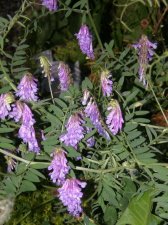

Passionflower is included in pharmacopeias, such as the European and British Pharmacopoeias in which the dried aerial parts of the plant are mentioned. In traditional medicine, passionflower is reputed to have a number of potential uses including diarrhoea, dysmenorrhoea, neuralgia, burns, haemorrhoids and insomnia as used historically in Europe. Historically, the plant has been used as a herbal medicine in the belief it may be used for anxiety, insomnia, or hypertension. Traditional medicine Historical uses and folk medicine It is also recommended to train the vines onto trellis and fences to limit propagation. Mechanical control as removing the suckers regularly is advised to prevent the spreading of maypop. incarnata is referred to as a weed by these publications: Weeds of Kentucky and adjacent states: a field guide and Weeds of the United States and Canada. The United States Department of Agriculture notes that P. The genus Passiflora introduced for agricultural purpose has been reported as an important weed in certain regions of the world. Passiflora incarnata can potentially become an agricultural weed. As both bees and hummingbirds look for nectar, the pollen filled flower anthers brush the back of the bee or the face of the hummingbird, enabling pollen to be readily transferred to the central sticky stigma. The flowers appear suitable for bumblebee pollination and may attract ruby-throated hummingbirds. There are some problems with nematodes and caterpillars in the culture of P. Seeds can be collected in the fall after the fruit has begun to shrivel. The harvest depends on vine size and age of the plant but one reported 10–20 fruits per vine. Then the fruit develops in two to three months.

Each flower has a very short life (about one day). One to two years are necessary before they begin bearing. The space between two plants is 36–60 inches (91.44 – 152.4 cm).

incarnata can be planted all the year in zone 7–11 ( hardiness zone). The plants have a high drought tolerance. incarnata are well-drained but the plants tolerate occasionally wet and acidic soils.

#Wild vine with purple flowers full#
The plants grow in full sun and need direct sunlight for at least half of the day. The vines can carpet the floor of thickets within days in favorable weather. The wild maypop is an aggressive vine native to the southeastern United States extending into the central US reaching Illinois, Indiana, and Ohio. Passiflora incarnata is easily cultivated and in its native range and homeland is a common low maintenance garden plant that can be trained to adorn fences and arbors. This, and other passionflowers are the exclusive larval host plants for the Gulf fritillary and non-exclusive for the variegated fritillary butterflies. For thousands of years the maypop was a staple food and medicinal plant for the Cherokee and to this day it is a revered piece of their heritage. The Cherokee in the Tennessee area called it ocoee the Ocoee River and valley are named after this plant, which is the Tennessee state wildflower. It is not found in shady areas beneath a forest canopy. It thrives in areas with plentiful sunlight. The maypop occurs in thickets, disturbed areas, near riverbanks, and near unmowed pastures, roadsides, and railroads. incarnata its common name, as well as the fact that its roots can remain dormant for most of the winter underground and then the rest of the plant "pops" out of the ground by May, unharmed by the snow. The egg-shaped green fruits 'may pop' when stepped on. In many cases its fruit is very popular with wildlife. As with other passifloras, it is the larval food of a number of lepidoptera species, including the zebra longwing, the Gulf fritillary, the crimson-patched longwing, the Julia, the Plebeian sphinx, and the variegated fritillary. The seeds are black and approximately 5 mm in size. The color of the pulp is originally white and becomes a dull yellow when ripe. Like other passifloras, the pulp is gelatenous and encases the seeds. The fleshy fruit, also referred to as a maypop, is an oval yellowish berry about the size of a hen egg it is green, though it may become yellow-green to yellow-orange as it matures. The flower normally begins to bloom in July. They are pollinated by insects such as bumblebees and carpenter bees, and are self-sterile. The large flower is typically arranged in a ring above the petals and sepals. They exhibit a white and purple corona, a structure of fine appendages between the petals and stamens. They have two characteristic glands at the base of the blade on the petiole. Leaves are alternate and palmately 3-lobed and occasionally 5-lobed, measuring 6–15 centimetres (2.4–5.9 in). The stems can be smooth or pubescent they are long and trailing, possessing many tendrils.


 0 kommentar(er)
0 kommentar(er)
